Although they aren't as flashy as the sales email, transactional emails are, without a doubt, the cornerstone of your email marketing strategy. Building an automated email strategy based on just a few transactional email templates will not only save you time, but also help you achieve important marketing goals for your business.
What is a transactional email?
Transactional emails are triggered by customers carrying out certain actions, reaching specific milestones, or completing events which you deem important to your business. Because of the clear cause-effect relationship, it's easy to integrate these types of emails into your standard marketing strategy to specifically target certain types of customers.
Here are 5 easy-to-implement use cases for the humble transactional email that you can adopt for your email marketing arsenal to drastically improve your business's performance in multiple areas.
1. Sign up/Account creation
Mastering the onboarding process is crucial for any business; making your welcome email one of the most important you will ever send.
Sending out an email when a customer signs up to your newsletter or creates an account for your service is a great way to welcome them into your community. Here are three key things to include:
- A thank-you message: Make sure you start things off the right way by thanking your customer for subscribing.
- Name placeholders: Address your customer by name to create a more friendly, personal feel.
- Useful information: This could include a link to your store, information about your social media pages, your customers's username, instructions on how to download your app, etc.
Use the welcome email to introduce new customers to your business and show them how to get started.
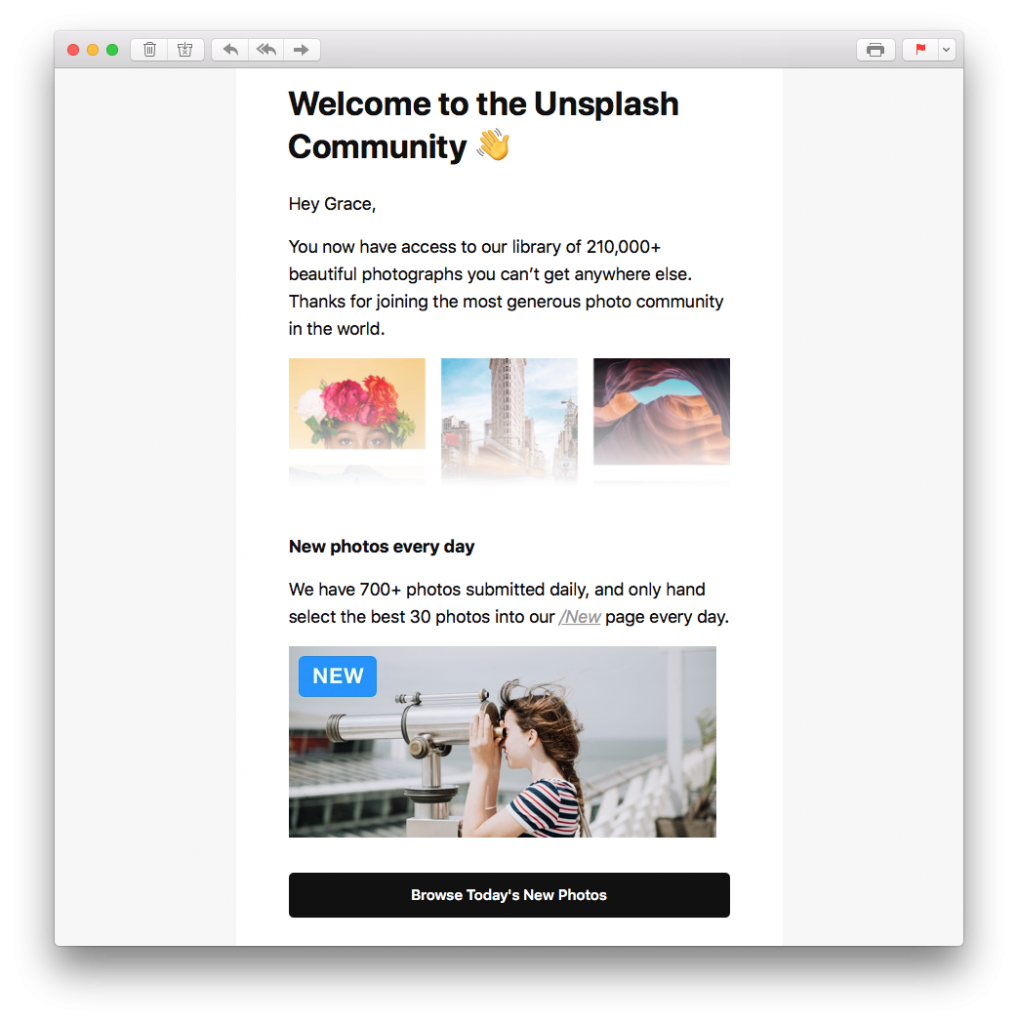
This welcome email from Unsplash ticks all the right boxes and shows users how to get started browsing the latest photos straight away.
2. Purchase confirmation
Whether tangible products, software, event tickets, or something else, if your business is selling something, you need to include the purchase confirmation email as one of your transactional email templates.
When making an online purchase, customers naturally seek more reassurance than in a physical store where there is a clear exchange of goods for money. A purchase confirmation email acts as a receipt and also confirms to the customer that their transaction was completed successfully.
Be sure to include all of the important information including product ordered, price, payment method and delivery date so that the customer has this for their records. It is also a good idea to include your contact information in case the customer has any questions about their order.
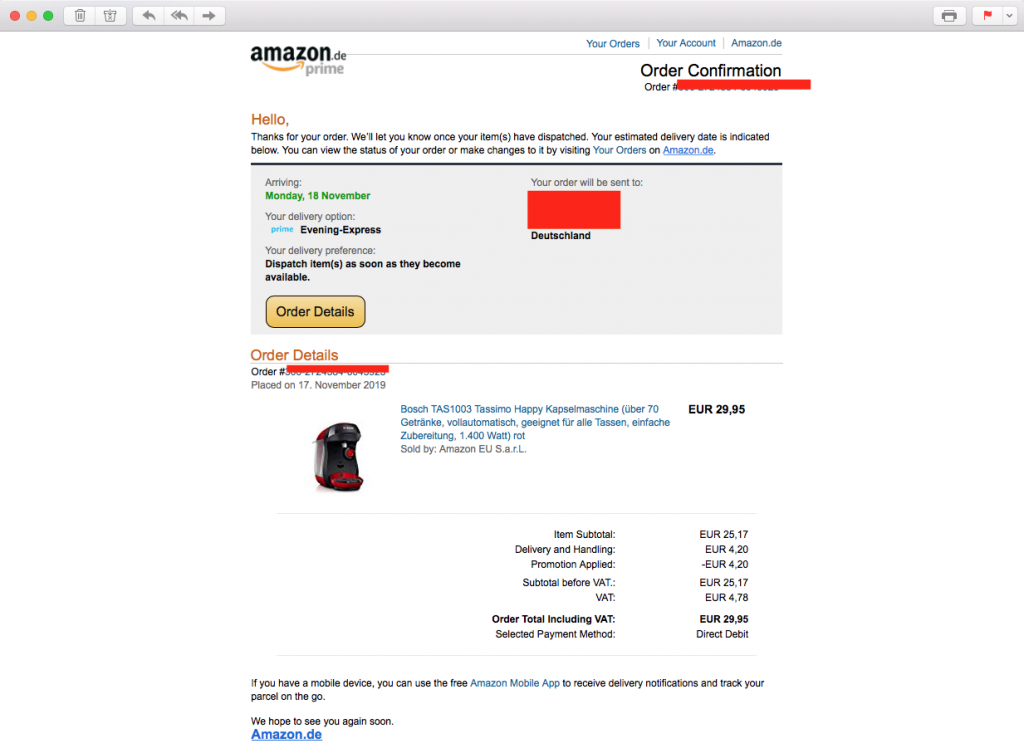
This email by Amazon contains all the most important information the customer needs concerning their purchase.
3. Renewal prompt
The subscription model is becoming more and more popular. Take Netflix, Spotify, Adobe, etc. as an example. Because many of us use so many different subscription services, it is a good idea to remind users when it's time to renew their license for your product. Not only is this a helpful gesture, it also helps prevent you losing out on customers because they've forgotten to renew.
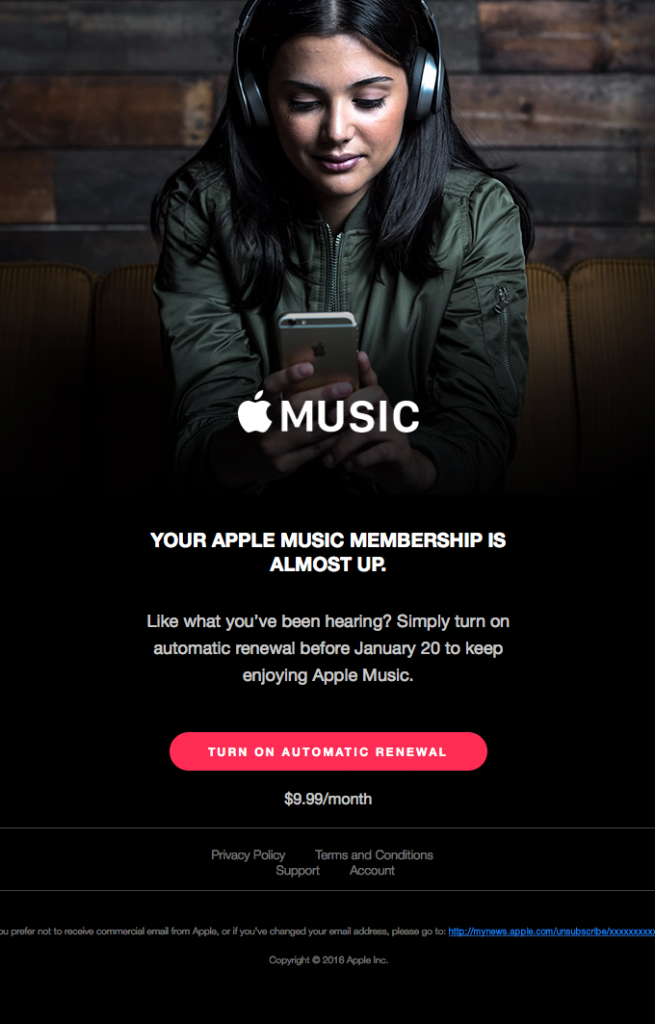
Apple Music keep things short and simple in this renewal prompt. The CTA (call-to-action) button also takes the customer right to where they need to go.
Many services auto-renew without the customer having to do anything. It is also important to remind your customer that their auto-renewal is about to occur, as they may wish to make changes to their subscription details. You'll definitely thank yourself later when you're not receiving complaints and refund requests.
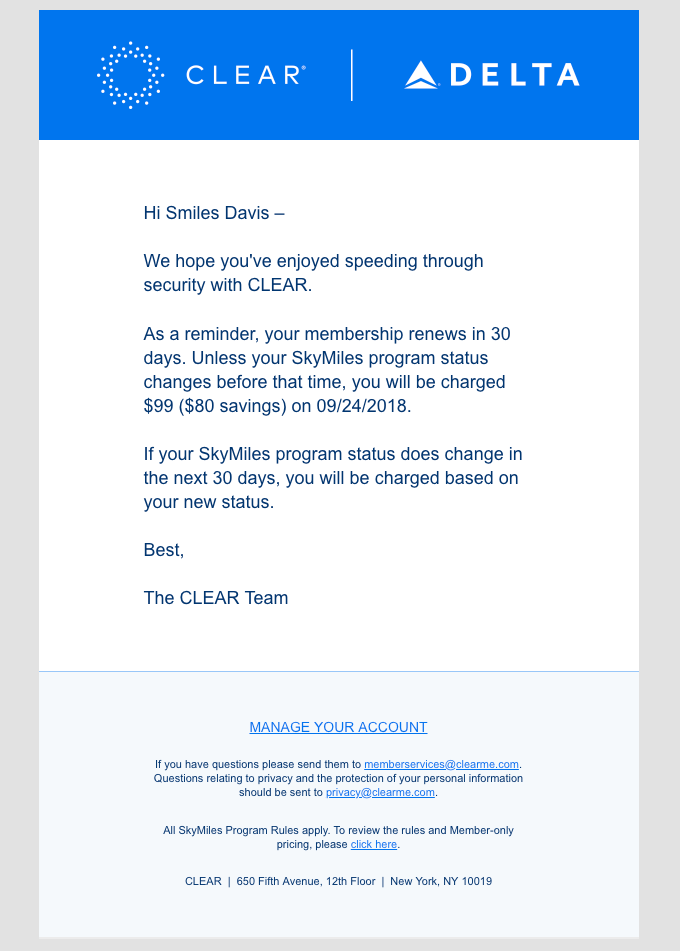
As shown by Clear, reminding your customer about auto-renewals is not only the decent thing to do, it also helps to reduce complaints and refund requests later on.
4. Abandoned cart
We've talked about this in detail before, but an abandoned cart email is also a super important part of your transactional email strategy.
Rather than missing out on potential sales opportunities, make sure to encourage re-engagement wherever possible. Keep track of incomplete transactions and send out a friendly reminder to your customer to pick up where they left of.
In many cases, customers may have simply become distracted or forgotten to finish their order. Even if just a small percentage choose to resume their purchase, sending an abandoned cart email is a good way to maximise all potential sales opportunities.
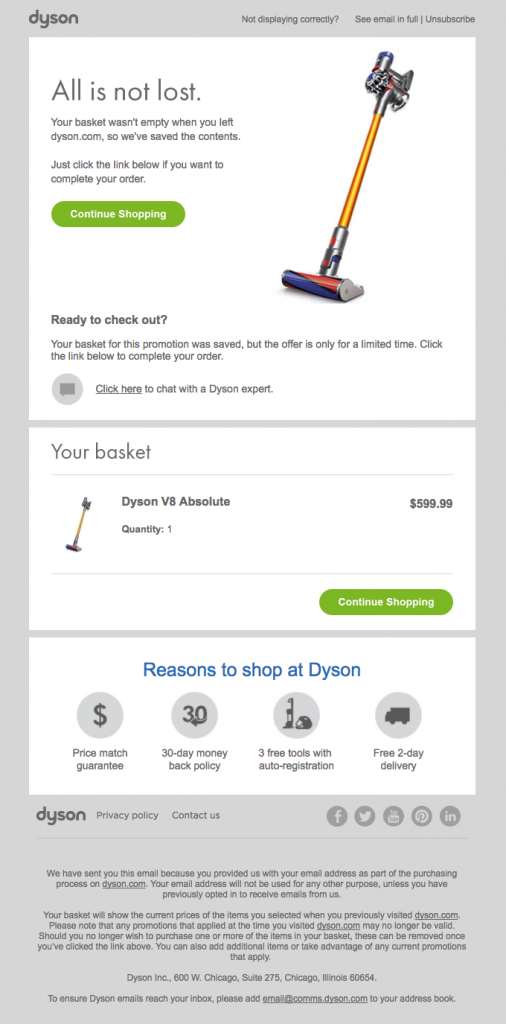
Dyson make it easy for customers to continue shopping with a bright CTA. Including the key product details is also a good way to help jog the reader's memory.
5. Feedback request
Feedback is the key to optimising your business to suit your customers' needs. For this reason, including some form of feedback request in your transactional email collection is also a good idea.
Here are a few examples of things customers could do which may trigger the need for you to collect feedback from them:
- Cancelling a subscription
- Purchasing an item
- Visiting your business (e.g. hotel, restaurant, salon)
- Attending an event you organised
Sending customers a quick request for feedback after they've carried out certain events is a good way to determine how to improve your product or service for your target audience. The key to a good feedback email is to keep things concise and to send on time so the experience is still fresh in the customer's mind.
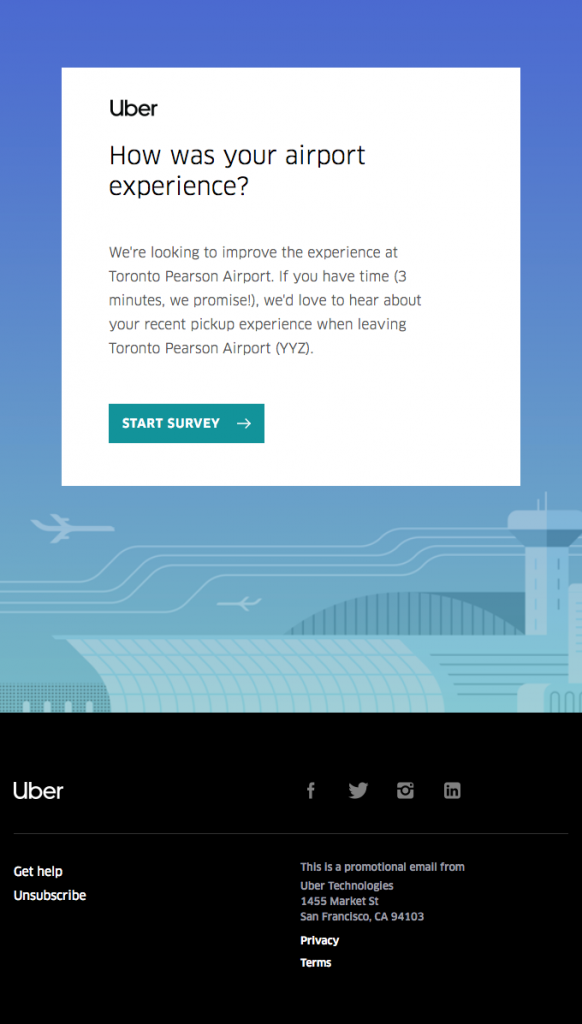
This email by Uber is nicely worded and allows the customer to give them a direct response about a specific topic.
Creating transactional email templates in Mail Designer 365
As well as a stylish selection of easy-to-adapt, ready-made transactional email templates to fit all these use cases, Mail Designer 365 also provides you with all the creative tools you need to design effective transactional emails from scratch. This post shares some important tips about what to include when designing your own transactional email templates.
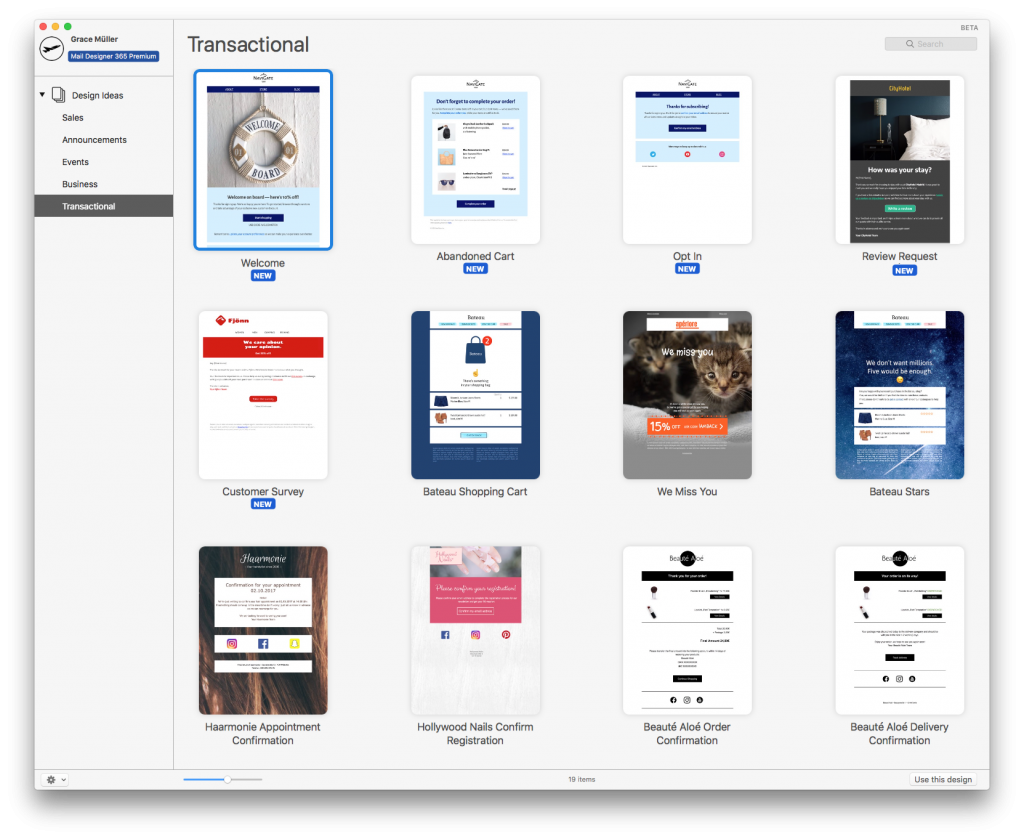
Mail Designer 365 offers you an array of ready-to-send transactional email templates.
Once your template is ready, explore a variety of export options to use it with the automation tools provided by your chosen ESP. Export directly to Mailchimp, DirectMail or Campaign Monitor, or export your design as HTML to use with all leading ESPs and marketing tools.
Not got a Mail Designer 365 Plan yet? Sign up to Mail Designer 365 today for free and start creating transactional email templates for your automated email strategy.
Until next time!
Your Mail Designer 365 Team
Get expert tips straight to your inbox!
Please check and try again.
We've just sent you an email for you to confirm your email address, if you haven't already.

